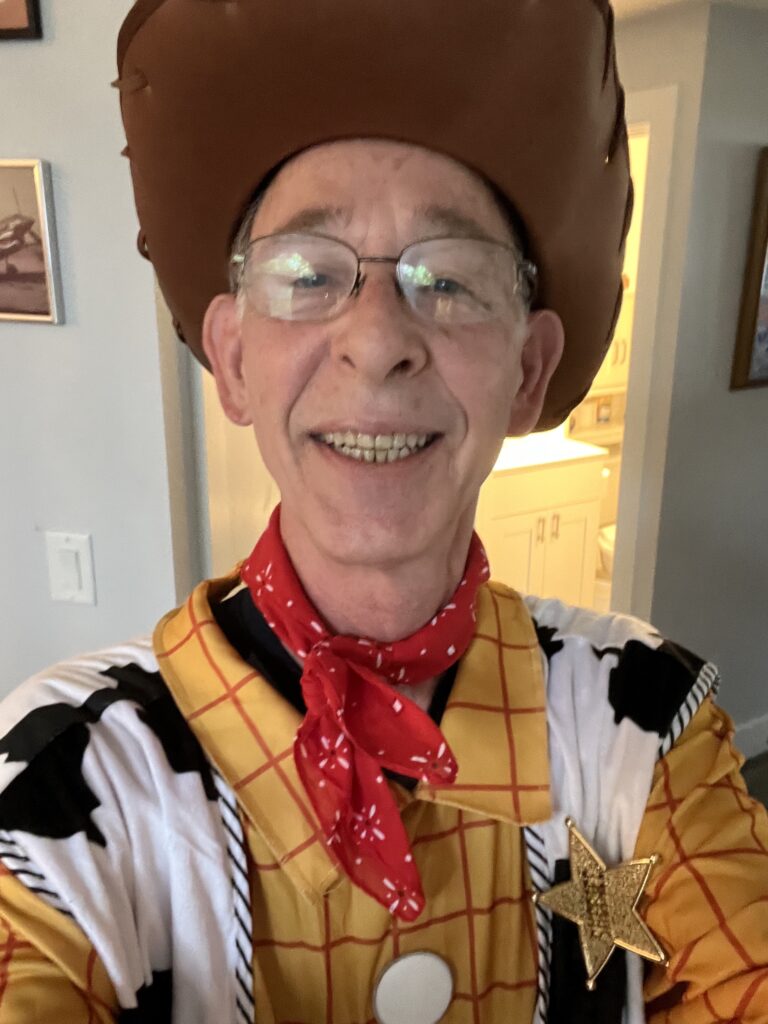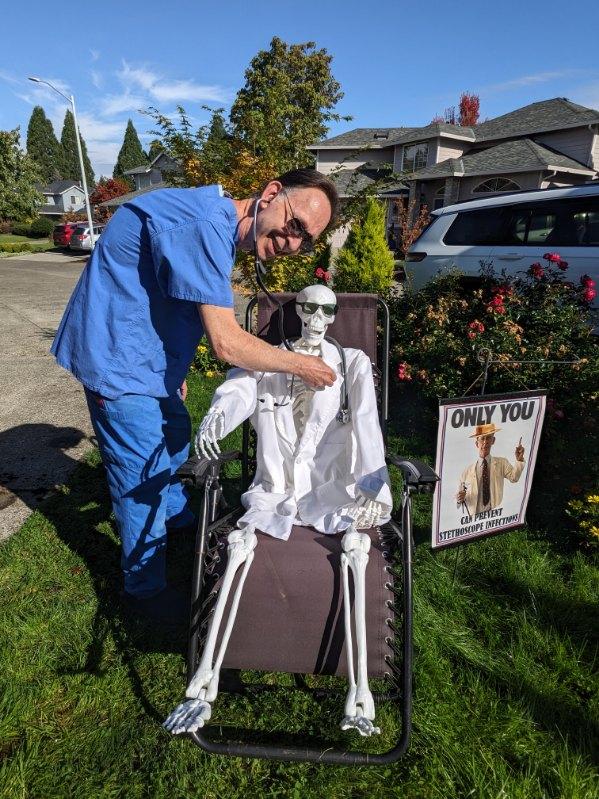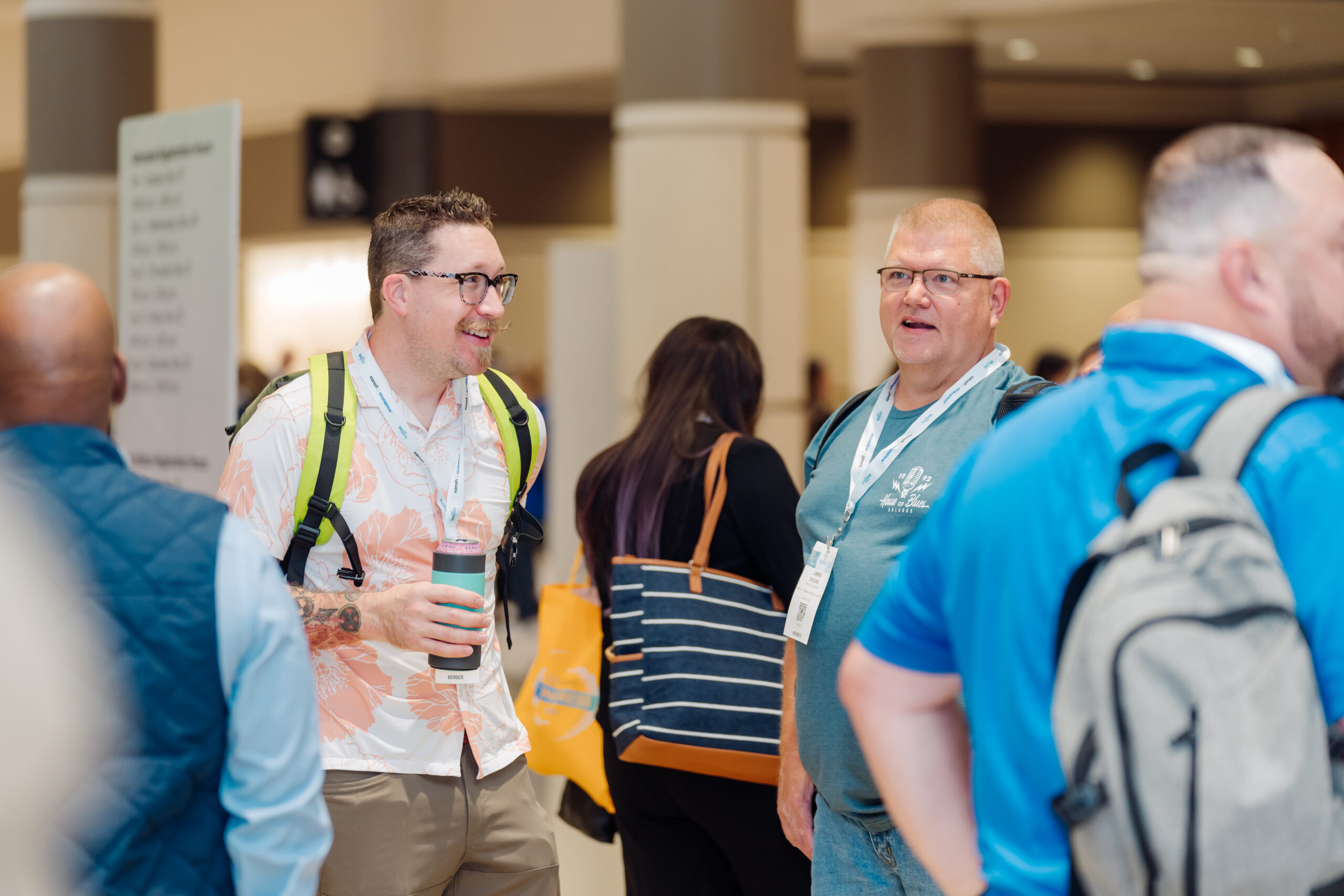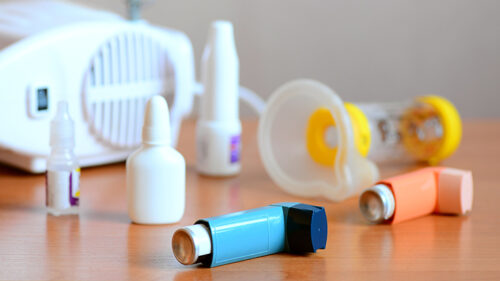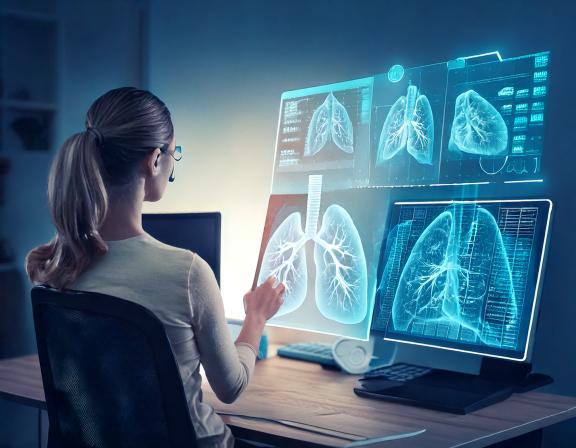
By Debbie Bunch
December 2, 2024
The COVID-19 pandemic sparked a new wave of initiatives aimed at delivering care to patients in their own homes. One area that benefited was pulmonary rehabilitation, with studies suggesting these programs are not only as effective as in-person programs but offer a range of efficiencies as well.
For example, a study published by CHEST in November found people who attended a home-based program reached similar clinical goals as those who attended a center-based program, but were actually almost four times more likely to complete the program than those in the in-person group, 90% vs. 58%.
Stephen Wehrman, RRT, RPFT, FAARC, lives this experience every day. As an RT for the virtual PR program at Morlen Health, a subsidiary of Northwest Permanente, a physician group within Kaiser Permanente, he works with COPD patients at home to improve their respiratory health.
Main providers of care
Wehrman has been in the position for the past six months but has many years of experience helping people live well with lung disease, first through his Better Breathers’ group at the American Lung Association and then via his role in helping to start an in-house PR program at a hospital in Honolulu, HI.
“Respiratory therapists are the main providers of care in our program,” he explained. “We do initial evaluations and 30-60-90 day evals, provide one-on-one therapy visits, deliver classes via PowerPoint, and supervise exercise classes along with the exercise physiologist.”
They use an online medical records platform to handle all of the patient care documentation as well and provide extensive input into how the program is delivered, offering their insights into everything from the overall plan to new ideas and therapies to improve the program for their patients.
A big perk for the therapists who work in the program is, it is 100% home-based not just for patients but for their clinicians as well.
“My job is entirely ‘work from home,’” said Wehrman. “I do all of my work from my computer in my home office.”
Teamwork makes the dream work
But while it is a work from home job, therapists still work closely with other team members, which includes the CEO of the company, the medical director, who is a pulmonologist, the officer manager, and the exercise physiologists who participate in the clinical care of patients.
“The rest of team totally relies on my knowledge of COPD and respiratory care,” emphasized Wehrman. “They are always asking questions related to our expertise.” However, he stresses team members on the business side are essential when it comes to improving the accuracy of the platform and the ability of the clinicians to send material to patients and decide which materials to send.
His medical director is an invaluable collaborator. “The medical director relies on me to do the initial evaluation and determine if I think the patient will be able to do the program,” he said. “I rely on my medical director for all kinds of advice, and we frequently discuss patient strategies, documentation, program educational tools, etc.”
Wehrman credits his RN friends in the virtual cardiac rehabilitation program with sharing their expertise as well. “I would not be able to fill their shoes,” he said, and he believes the feeling is mutual. “That’s how I see the respiratory therapist — invaluable to virtual PR. No other caregiver has the specialized knowledge and experience.”
A true believer
Does Wehrman see opportunities for other RTs in this space? His answer is a cautious yes. “It all depends on reimbursement,” he said. “As long as the government, Medicare, and other insurers will continue to support telehealth it will work.” Collecting data showing that virtual PR reduces exacerbations and improves quality of life will be paramount to the continued success of the concept.
He believes maintaining the right credentials is important for the clinicians in these programs too, as is completing the right continuing education courses. He is currently getting ready to take the AARC’s Pulmonary Rehabilitation Certificate Course (he previously completed the Pulmonary Disease Educator Course), which he thinks is a “really valuable add-on available to us now.”
As for his personal experience with virtual PR, he only has to look at the individual patients he has helped to know it is worthwhile. One, in particular, stands out from the crowd.
“I can tell you about a patient of mine, 70 years old, severe COPD, on six liters, and is a CO2 retainer,” he said. “He has a lot of secretions and every device imaginable.”
Wehrman says the man was “kicked out” of a center-based PR program because of the secretion problems, and when he first met him, he was homebound.
“One month of virtual PR and he and his wife went to the coast for a week vacation,” he said. “Three months of PR and he is back at his AA meetings — he actually ran the meeting — and doing things with friends.”
Stories like have made a believer of Stephen Wehrman. “This is why I do virtual pulmonary rehab,” he said.
